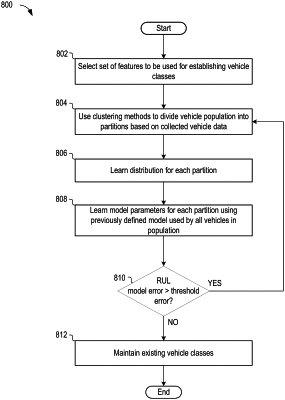| CPC G05B 23/0283 (2013.01) [G05B 23/024 (2013.01); G05B 23/0281 (2013.01); G07C 5/006 (2013.01); G07C 5/008 (2013.01); G07C 5/0808 (2013.01)] | 20 Claims |

|
1. A method, comprising:
dividing a population of vehicles of a connected vehicle population into a plurality of vehicle classes;
for each vehicle class of the plurality of vehicle classes, training a class-specific model of the vehicle class to predict a health status variable of a vehicle component included in the vehicle class based on labelled data from historic databases and calibration data; and
for each vehicle class of the plurality of vehicle classes, using a first Federated Learning (FL) strategy to:
request local model parameter data from a respective local model of each vehicle of a plurality of vehicles of the vehicle class, the local model parameter data including model inputs, model outputs, model error, and/or weights and biases of each local model;
receive the local model parameter data from the plurality of vehicles;
update the class-specific model of the vehicle class based on the received local model parameter data; and
send updated parameters of the updated, class-specific model to vehicles included in the vehicle class and further send instructions to retrain local models of the vehicles with the updated parameters, wherein the vehicle class is defined based on a driver driving style, and wherein different class-specific models are used for drivers of different driving styles.
|